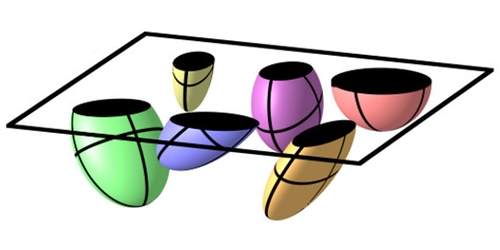Grain Properties in a Single Shot
Lava and ice cream have a lot in common, says Robert Farr, who studies myriad edible and inedible materials at the London Institute for Mathematical Sciences and the beverage company Jacobs Douwe Egberts, UK. Molten ice cream and lava both flow as slurries—fluids full of solid particles—while their solid forms are made up of randomly oriented crystalline grains. Another commonality is that determining both materials’ 3D structures is tricky, requiring costly and tedious imaging techniques for geologists and food scientists alike. Farr and colleagues have now taken a step toward solving this problem by deriving a mathematical relation that allows quick measurement of the size and shape of a material’s grains using a 2D image and electron diffraction data. The team says that their method should be applicable to any isotropic polycrystalline material.
Two methods are commonly used to determine the size and shape distributions of a material’s grains. One is x-ray tomography, where the structure is deduced by merging multiple 2D x-ray images taken at different angles. The other is an iterative imaging process, where a thin layer at the surface of a sample is repeatedly sliced off, and an image is acquired after each cut. The method of Farr and colleagues, however, allows the grain properties to be captured in a single shot.
The team’s approach combines a 2D electron microscope image with simultaneously collected crystal orientation data from back-scattered electrons. These data are fed into a mathematical relation that calculates the grain distributions. The team verified their method on simulated materials consisting of randomly oriented ellipsoids or rectangular blocks, and they tested it on a piece of basaltic rock (solidified lava). They have yet to try their method on ice cream.
This research is published in Physical Review Materials.
–Katherine Wright
Katherine Wright is a Senior Editor of Physics.





